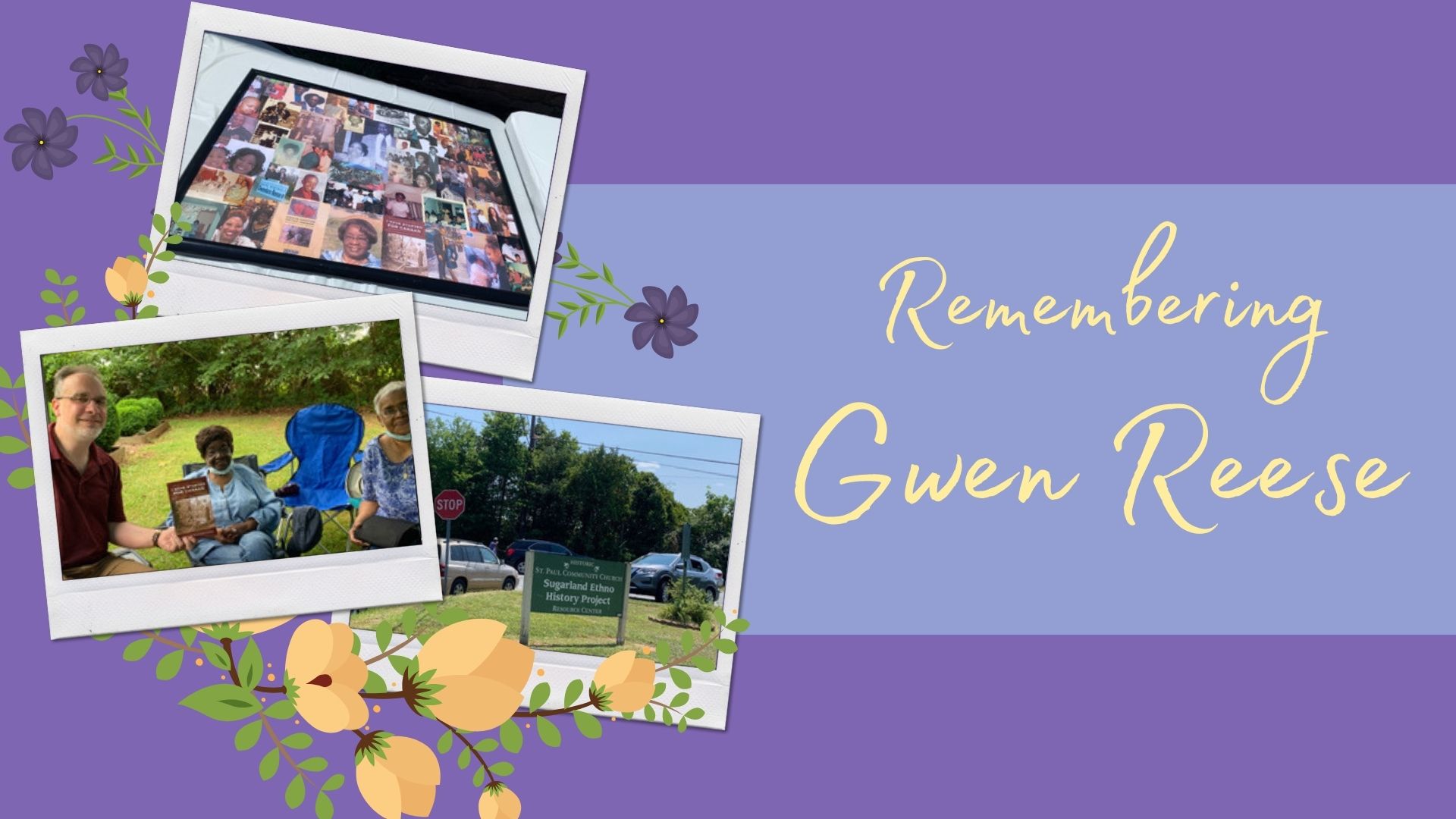Our greater Poolesville community owes a debt of gratitude to Gwendora “Gwen” Hebron Reese for her efforts to document and preserve the history of her family and the Sugarland community.
One of 13 children, she was born and raised chiefly in Sugarland – a once thriving self-contained community – complete with a church, school, general store, post office and even a practice hall for a cornet band.
Gwen, who spent the 1940’s and 50’s in Sugarland, fondly remembered those days saying, “We lived in our own little world, and it was wonderful.”
The original 1871 Sugarland Forest Methodist Episcopal Church was the cornerstone of the community’s spiritual, social and economic success. The church was made possible by three freedman, Gwen’s paternal great grandfather Patrick Hebron Jr., William Taylor, and John Henry Diggs. They purchased the 1.3-acre property for $25 from George Washington Dawson on an extended payment plan.
Many of the formerly enslaved Sugarland residents acquired sought-after skills that supported them as free men and women. These builders, farmers, quarrymen, cooks, laundresses, and others helped the Medley District (Upper Western Montgomery County) economy hum.
Families lived together in multigenerational homes, often turning chores like preparing the big Sunday meal into social events. The community placed a premium on education, prioritizing skills like reading and writing, which were new disciplines for many. Church collections paid teachers from outside the community to hold class in the church building. By the 1920’s a one room log cabin Sugarland school served grades one through seven. Further education for Black students was limited to schools in Baltimore or DC where some students bartered babysitting for room and board. Others, needed in the fields as laborers, had no options.
By the time Gwen was born in 1941, the Sugarland school had closed, forcing Gwen to attend school in Sellman (outside Barnesville) and Boyds. She went on to attend high school in Rockville, first at Lincoln and later Carver, the last segregated high school in Montgomery County. One of Gwen’s descendants, Phyllis Hebron, was the first from Sugarland to attend Poolesville schools in 1957.
Philip Johnson, Gwen’s maternal great grandfather, who was born into slavery in Poolesville in 1847, became a noted scholar for the times. Before he passed away in 1938, he was able to share his story for posterity with the Federal Writer’s Project, a part of Roosevelt’s Work Projects Administration (WPA).
Sugarland residents, including Philip Johnson’s grandson Philip Samuel, served our country with distinction in WWII. But for this new generation, the lure of better, higher paying jobs and proximity to available schools outweighed the desire to return to simpler times.
By the 1960’s, this exodus left Sugarland’s cornerstone, now St. Paul’s Community Church, with dwindling numbers. From its heyday of 70 families in the 1900’s, only five still remained in 2007. Gwen, herself, enlisted in the United States Women’s Army Corps in 1960 and was stationed in Fort Benning, Georgia. She also attended Montgomery College and trained at an institute for early childhood education.
On a visit back to Sugarland in the 1990’s, Gwen was struck by the unmistakable signs of change. St. Paul’s had finally closed its doors in 1994 and weeds were growing around the 300 mostly unidentified grave sites.
The weather-worn, cracked tombstone of Philip Johnson and other family members struck a resonating chord. Gwen decided she had to act before her ancestors’ lives became faded memories.
Her original intent was to restore St. Paul’s to its former glory. But the project expanded when she learned about Philip Johnson’s part in the 1930’s WPA project from Button Farm historian Tony Cohen.
Subsequently, Howard University biological anthropologist Dr. Michael Blakey heard of Sugarland’s historical significance, met with Sugarland descendants, and implemented a Sugarland Ethno-History Project curriculum at Howard. HU scholars taught Gwen to properly collect and preserve all the precious memorabilia she was amassing. In 1996, St. Paul’s was designated as a national historic site. Nine years later the above-named project became a nonprofit organization.
Gwen had such success reclaiming the past. that several of the 1,000 + photos and artifacts she collected are featured in the Smithsonian National Museum of African American History and Culture. On the second floor (C2), the reassembled Jones-Hall-Sim’s log cabin from Jonesville includes photos depicting post-slavery life for the residents of Sugarland. One photo depicting Samuel Jackson pumping well water with young onlookers became the front cover of the recently published, I Have Started for Canaan. This collaboration by Gwen, her cousin Suzanne Johnson and writer Jeff Sypeck chronicles the history of Sugarland from before the Civil War. Gwen was blessed to see this labor of love realized in her lifetime.
Admittedly shy and so quiet you could miss her entering a room, Gwen enthusiastically offered her voice to amplify her mission. The Washington Post covered her journey several times over the years. The Montgomery County Historical Society, and other local and county civic organizations honored her. In 2019 she was honored as the Poolesville Day Grand Marshall. The Montgomery Countryside Alliance, where she had served as a Board member for years, has her book available for sale on their website.
Before passing away in July at the age of 79 her final wish was to have a permanent museum at St. Paul’s to house Sugarland’s past. She envisioned a pavilion next to the church so families could gather for picnics.
Gwen Reese loved and cherished her time in Sugarland. She was proud to share the rich and remarkable past of her ancestors, their friends and neighbors. With her quiet strength and perseverance, she helped us to feel a deeper connection to them and their descendants.
We, at Poolesville Seniors so appreciate the contributions of Gwendora Hebron-Reese and are pleased to join in a celebration of her life.

